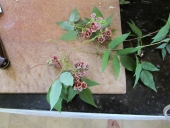Ralph,
I guess it depends on your scale. I have made 1.5" blocks and 3". In general they work well. I used them to sprout shrub/vine layer plants (3") that haven't germinated in place. A good example is yellowhorn, things I am paying through the nose for seeds. The smaller ones I used for perennials with big seeds (lupines and stuff like that) that also haven't done much in the wilds. For veggies they work sort of ok. They tend to fall apart after 3-4 weeks unless you compress them into a supernova, you have to have a wicking waterer I think and mine didn't work optimally. I think that was my fault for poor composition of my starter medium too. I went back to peat pellets this year because I changed my setup to include heat pads since I am in deep mulch and everything tends to be late germinating, but I'm doing some tests on the small blocks for the trays. Moisture content when you are making them seems to be critical, not too wet but pretty moist.
I would say if you are buying starter medium, you are not saving much versus buying bulk peat pellets at 10c a piece (I go through 600 at a time). I'm working on making my own bulk starter medium and potting soil
from degraded wood chips using only waste stream items. For the starter medium especially under a cover it turned into a moldfest. So I am back to a more sterile starter plan for that.











